Title : Site suitability analysis for sea cucumber mariculture in the coastal area of Bangladesh
Abstract:
Sea cucumber (Holothuria spp.) mariculture could be a significant prospect for blue growth in Bangladesh because of its strong demand in the international market and ecological benefits, including sediment bioturbation and water filtration. This study utilized environmental data to identify and evaluate potential sea cucumber mariculture sites along Bangladesh's coastline. A Generalized Additive Model was used, considering sea cucumber presence and absence data, as well as environmental variables (SST, salinity, depth, PAR, TSM, current and primary production), to predict the spatial suitability of sea cucumber habitats. The habitat suitability map predicted by GAM was classified on a scale of 0.0 (not suitable) to 1.0 (highly suitable). Highly suitable sites are concentrated in the south-eastern coastal belt, particularly around the offshore island of St. Martin and Cox’s Bazar to Teknaf coastal waters, where stable sediment conditions, moderate salinity, and controlled hydrodynamics favour sea cucumber mariculture. Moderately suitable areas (0.6–0.8) are found near the surrounding coastal water of the Moheskhali and Sonadia Islands. Not suitable zones (0.0–0.4) are prevalent in the GBM deltas, including Sundarbans, where high freshwater influx and unstable sedimentation impede mariculture viability. The study highlights the south-eastern Bangladesh coast as a priority zone for integrated mariculture planning within the MSP framework. Planned zoning of multi-trophic aquaculture systems and community-based mariculture initiatives can enrich sustainability.



